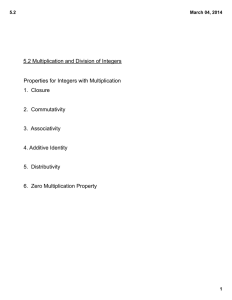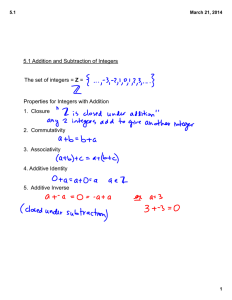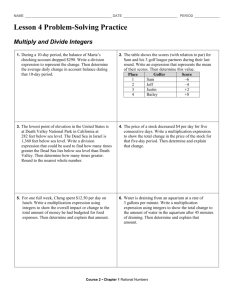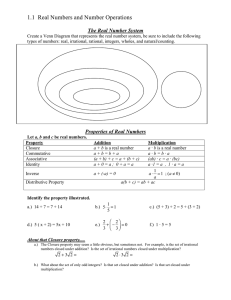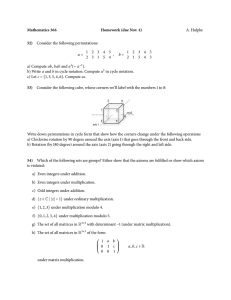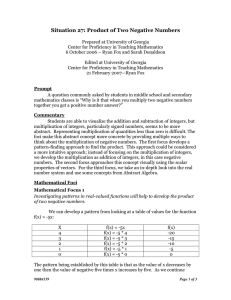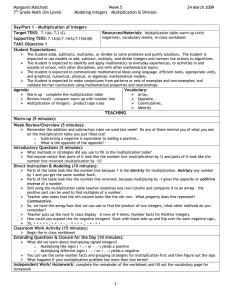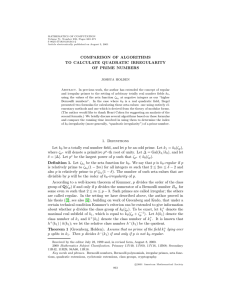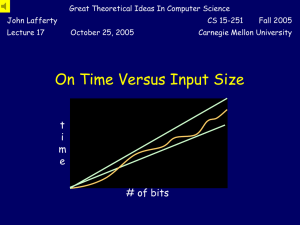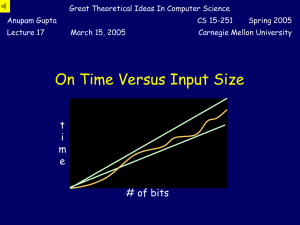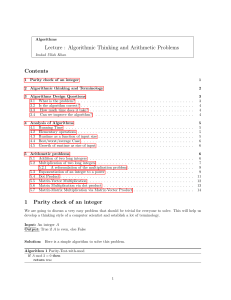Document 11278786
advertisement
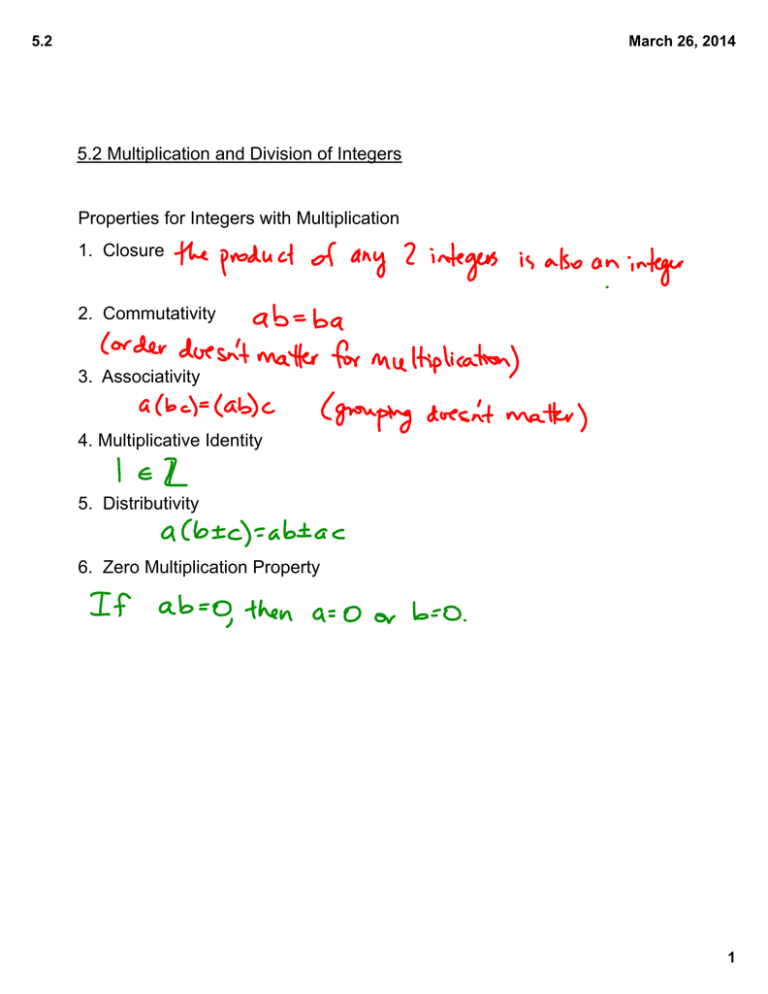
5.2 March 26, 2014 5.2 Multiplication and Division of Integers Properties for Integers with Multiplication 1. Closure 2. Commutativity 3. Associativity 4. Multiplicative Identity 5. Distributivity 6. Zero Multiplication Property 1 5.2 March 26, 2014 1. How would you properly read these statements? And can you explain why these are t (a) (-1)a = -a = a(-1) (b) -a(b) = -(ab) = a(-b) (c) (-a)(-b) = ab = -(-(ab)) 2. A little more about absolute value. Fill in the blank with <, =, or >. (a) |a| + |b| _____ |a + b| (b) |a| (|b|) ______ |a(b)| (c) |a| - |b| _____ |a - b| (d) |a| ÷ |b| _____ |a ÷ b| 2 5.2 March 26, 2014 Multiplication of Integers--various models/algorithms 1. Set Model 3. Pattern 2. Measurement (number line) 5. Area Model 4. Repeated Addition 3 5.2 March 26, 2014 Examples: 1. -2(5) 2. 3(-4) 3. -5(-6) 4. Make up a story problem that would produce this computation. 8(-9) 4 5.2 March 26, 2014 Division of Integers--various models/algorithms a ÷ b = ? is equivalent to a = b(?) (assuming b is not zero) 1. Set Model 3. Pattern 2. Measurement (number line) 4. Missing Factor 5 5.2 March 26, 2014 Examples: 1. 8 ÷ (-2) 2. -12 ÷ 6 3. -15 ÷ (-3) 4. -10 ÷ (-(-(-2))) (show on the number line) 5. Make up a story problem that would produce this computation. -25 ÷ 5 6 5.2 March 26, 2014 Ordering Integers 1. If a < b and b < c, then a ___ c. 2. If a < b, then a + c ____ b + c. 3. If a < b, then ap ____ bp, assuming p > 0. 4. If a < b, then an ____ bn, assuming n < 0. 7 5.2 March 26, 2014 8 5.2 March 26, 2014 9
